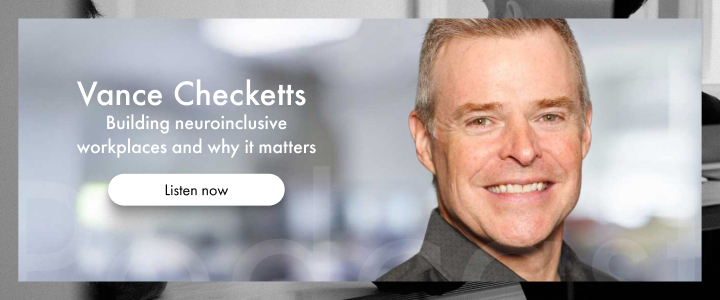
Neurodiversity is a reality on tech teams. Many leaders know this intuitively—their teams include talented autistic, ADHD, or dyslexic professionals whose unique approaches to problem-solving contribute to innovation. Yet, while neurodiversity is present, neuroinclusion often lags behind. Neuroinclusion requires intentional practices and policies that empower neurodivergent employees to thrive, supporting performance, well-being, and retention.
In my role as CEO of auticon, a social enterprise dedicated to neuroinclusion, I’ve seen firsthand how companies that prioritize neuroinclusion build stronger, more dynamic workplaces. By taking simple, intentional steps, tech leaders can transform their teams and set a new standard for inclusion in the industry.
Neurodiversity in tech: The first step, not the destination
- Half of neurodivergent workers want to quit their jobs—or say they already have.
- 54% of managers don’t feel capable or confident to support a neurodivergent employee.
- 61% of neurodivergent workers have experienced stigma or feeling misunderstood at some point during their career.
- 59% of neurodivergent employees worry that disclosing would have a negative impact on their career.
- 93% of neurodivergent professionals would be more likely to apply to, or continue to work for, a company that was supporting neurodivergent employees well.
Moving from incidental to intentional inclusion
Something I find interesting—and perhaps unique—about the tech sector is that due to the prevalence of neurodivergent employees, some companies end up informally embracing neuroinclusive practices. For example, a coding team that prefers working in low lighting with headphones on, or a manager who always writes detailed agendas and meeting notes because that supports their preferred way of working.
These informal actions are in line with best practices for supporting neurodivergent employees—which is great! At the same time, they’re not a replacement for an intentional process of creating a neuroinclusive work environment for all neurodivergent candidates and employees. By moving from incidental to intentional inclusion, tech leaders can build environments where neurodivergent employees feel consistently supported and valued. This shift transforms workplaces, benefiting both employees and the company.
Building neuroinclusive tech teams
At auticon, we take a 360° approach to neuroinclusion, which starts by helping companies identify strengths and gaps through a Neuroinclusion Maturity Assessment. This process evaluates policies, practices, and employee experiences to create a tailored roadmap for inclusion. Next steps might include:
- Awareness training to foster understanding of neurodiversity
- Manager workshops to equip leaders with actionable tools for support
- Detailed audit to address barriers in the recruitment process, interview process, and office environment
These steps transform inclusion from incidental to intentional, building a workplace culture where neurodivergent employees thrive.
Strengthening inclusion in the tech talent pipeline
At auticon, we believe that another powerful way to strengthen neuroinclusion is by creating early-career opportunities for autistic adults, who are often underemployed despite being eager and qualified to work in tech. That’s why we recently launched the auticon Training Institute (ATI), a nonprofit that offers free technical training, internships, job coaching, mentorship, and networking.
ATI serves as both a training ground for autistic adults entering tech careers and a catalyst for companies building their talent pipeline and inclusive practices. It connects companies with pre-screened, custom-trained tech interns and provides job coaching and neurodiversity training for teams, ensuring both interns and full-time employees have the tools to succeed.
Moving from awareness to action
Creating sustainable neuroinclusion requires change on two levels: company-wide policies and individual actions. For example, in recruitment, policies must ensure job descriptions and screening practices don’t unfairly exclude neurodivergent candidates. However, individual team members ultimately conduct interviews and make hiring decisions. This is why awareness and education are key, ensuring that everyone on your team understands neurodiversity and can avoid bias when evaluating neurodivergent candidates.
Ultimately, if you know you have neurodivergent team members but aren’t sure if they’re being adequately supported, start by asking them! This is a focus of auticon’s neuroinclusion assessment process I discussed above, and it’s also becoming increasingly common through corporate employee resource groups (ERGs) for neurodivergent and disabled employees.
For companies ready to take action, auticon offers comprehensive support—from assessments to training and beyond. The tools and practices to build a more inclusive workplace are within reach—let’s take the next step. By embracing neuroinclusion, you’re not only supporting your team but setting a new standard for the tech industry. Together, let’s unlock the full potential of neurodivergent talent—because innovation thrives on inclusion.

Vance Checketts
Vance Checketts is CEO of auticon US and Board President of auticon Training Institute. auticon is the world’s largest autistic-majority company and offers IT services and neuroinclusivity services to major employers globally.




